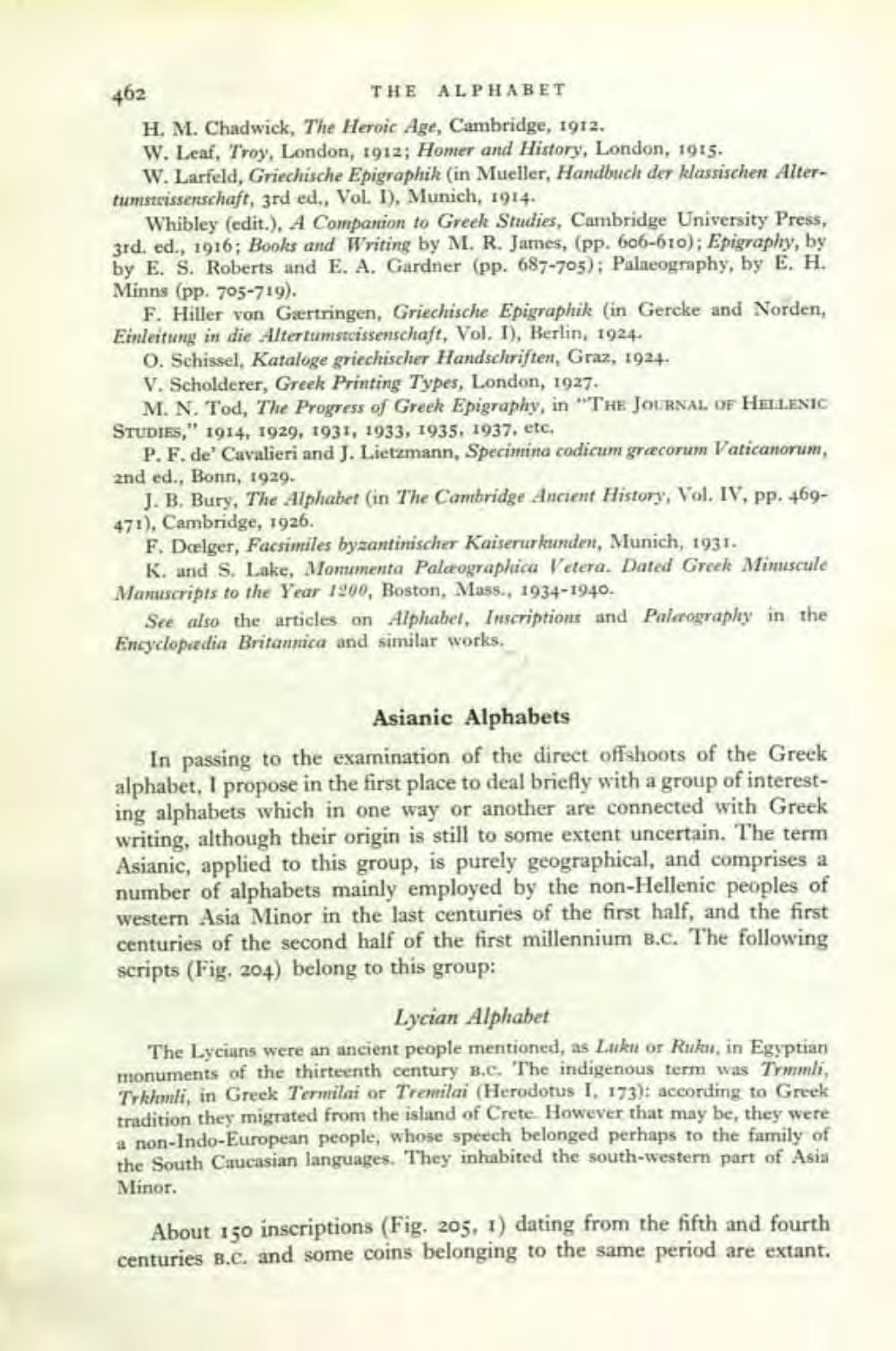________________
462
THE ALPHABET H. M. Chadwick, The Heroic Age, Cambridge, 1912. W. Leaf, Troy, London, 1912; Homer and History, London, 1915.
W. Larfeld, Griechische Epigraphik (in Mueller, Handbuch der klassischen Altertumszkissenschaft, 3rd ed., Vol. I), Munich, 1914.
Whibley (edit.), A Companion to Grech Studies, Cambridge University Press, 3rd. ed., 1916; Books and Writing by M. R. James, (pp. 606-610); Epigraphy, by by E. S. Roberts and E. A, Gardner (pp. 687-705); Palaeography, by E. H. Minns (pp. 705-719).
F. Hiller von Gärtringen, Griechische Epigraphik (in Gercke and Norden, Einleitung in die Altertumstcissenschaft, Vol. I), Berlin, 1924.
0. Schissel, Kataloge griechischer Handschriften, Graz, 1924. V. Scholderer, Greek Printing Types, London, 1927.
M. N. Tod, The Progress of Greek Epigraphy, in "THE JOURNAL OF HELLENIC STUDIES," 1914, 1929, 1931, 1933, 1935, 1937, etc.
P.F. de' Cavalieri and J. Lietzmann, Specimina codicum græcorun Vaticanorum, and ed., Bonn, 1929.
J. B. Bury, The Alphabet (in The Cambridge Ancient History, Vol. IV, pp. 469471), Cambridge, 1926.
F. Deelger, Facsimiles byzantinischer Kaiserur kunden, Munich, 1931.
K. and S. Lake, Monumenta Palæographica Vetera. Dated Greek Mimascule Manuscripts to the Year 1900, Boston, Mass., 1934-1940.
See also the articles on Alphabet, Inscriptions and Palaography in the Encyclopaedia Britannica and similar works.
Asianic Alphabets In passing to the examination of the direct offshoots of the Greek alphabet, I propose in the first place to deal briefly with a group of interesting alphabets which in one way or another are connected with writing, although their origin is still to some extent uncertain. The term Asianic, applied to this group, is purely geographical, and comprises a number of alphabets mainly employed by the non-Hellenic peoples of western Asia Minor in the last centuries of the first half, and the first centuries of the second half of the first millennium B.C. The following scripts (Fig. 204) belong to this group:
Lycian Alphabet The Lycians were an ancient people mentioned, as Luku or Ruku, in Egyptian monuments of the thirteenth century B.C. The indigenous term was Tomli, Trkhamli, in Greek Termilai or Trenilai (Herodotus I. 173): according to Greek tradition they migrated from the island of Crete However that may be, they were a non-Indo-European people, whose speech belonged perhaps to the family of the South Caucasian languages. They inhabited the south-western part of Asia Minor.
About 150 inscriptions (Fig. 205, 1) dating from the fifth and fourth centuries B.C. and some coins belonging to the same period are extant,




